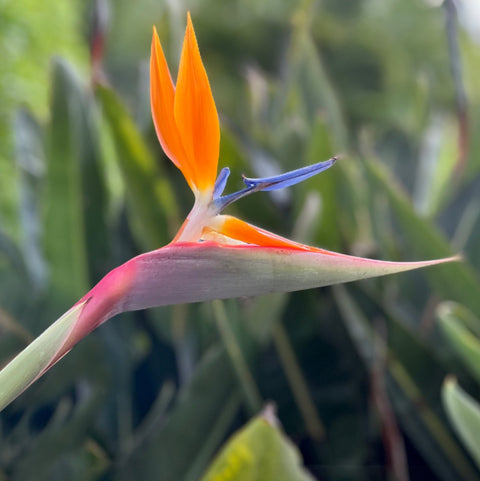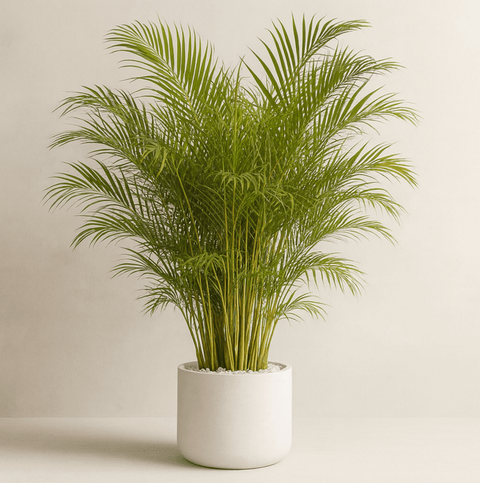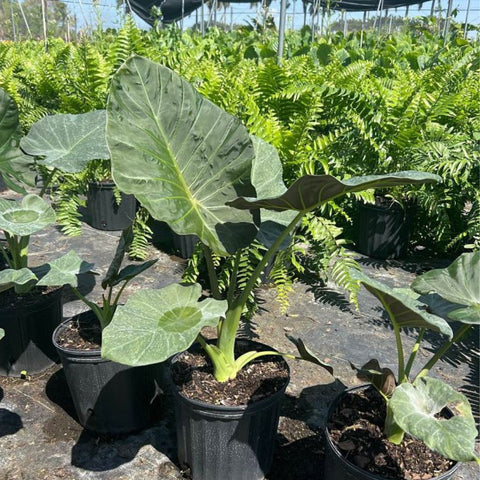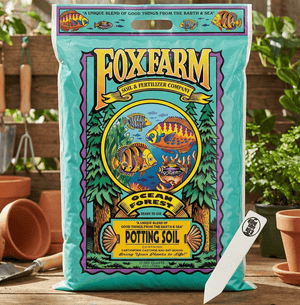Planning Your Spring Vegetable Garden
Assessing Your Space
When considering starting a spring vegetable garden, the first step is to assess the available space. Whether you have a sprawling backyard or a cozy balcony, understanding your garden's potential will guide your planting strategy. It's crucial to evaluate the size, sunlight exposure, and potential water sources of the area you plan to use.

Understanding Sunlight and Shade
Most vegetables thrive in full sunlight, ideally receiving at least 6 hours of direct sunlight daily. Observe your space for shade patterns created by trees, buildings, or other structures, and plan your layout accordingly. For spaces that are too shaded, you might need to select shade-tolerant varieties or consider enhancing light with reflective surfaces.
Soil Quality and Preparation
The next step involves understanding and preparing your soil. Perform a soil test to determine pH levels and nutrient content. Amend your soil with compost or organic matter to enhance fertility and drainage. Raised beds and container gardening are excellent alternatives if natural soil quality is poor.
Choosing the Types of Vegetables
Selecting the right vegetables involves more than just personal preference. Consider your climate zone and the length of your growing season. Opt for vegetables that are well-suited to spring planting like lettuce, spinach, radishes, peas, and carrots.
Companion Planting Considerations
Plan your vegetable combinations based on companion planting, which enhances garden health and minimizes pests. For instance, planting basil near tomatoes can boost growth and flavor, while marigolds can deter certain pests from nearby crops.
Designing Your Garden Layout
Garden Bed Configuration
Once you’ve chosen your vegetables, sketch out a rough garden plan. Strategic placement regarding sun exposure and plant height ensures optimal growth. You can opt for traditional rows or try square-foot gardening to maximize space and yield.

Incorporating Aesthetic Features
Blend function with beauty by incorporating decorative plants like the Agapanthus Lily of the Nile Blue. Its lovely blooms add visual interest while peacefully coexisting with your vegetables.
Sustainable Watering Solutions
Efficient watering practices not only conserve water but also maintain plant health. Drip irrigation systems offer precise watering with minimal waste, while rain barrels can be a sustainable source of water.
Preparing Your Soil for Spring Planting
Soil Testing and Amendments
Ensure your garden starts with a rich foundation by testing soil pH and nutrient levels. Most vegetables prefer slightly acidic to neutral soil. Amend the soil with necessary nutrients or adjust pH with lime or sulfur as needed.
The Role of Mulch
Applying mulch helps retain moisture and suppress weeds. Organic mulch like straw or shredded leaves decomposes over time, enriching the soil. Be careful not to pile it against plant stems to prevent rot.
Compost and Fertilization
Enhance soil structure and fertility by incorporating compost. Regular fertilization with a balanced, organic fertilizer can provide ongoing nutrition for your plants as they grow.

Planting Your Spring Vegetables
Seeds versus Seedlings
Decide whether to start from seeds or purchase seedlings. Starting from seeds is cost-effective, but requires more time and care. Seedlings from a nursery or a reputable online source like Plantology can give you a head start, especially for beginners.
Planting Depth and Spacing
Follow the recommended depths and spacing for each plant variety, typically found on seed packets or plant tags. Proper spacing reduces competition for resources and improves air circulation, reducing disease risk.
Timing Your Planting
Observe your local frost dates when planning planting times. Some plants, like peas and leafy greens, tolerate cool temperatures and can be sown early. Warmer season crops, such as tomatoes and peppers, should wait until the danger of frost subsides.
Caring for Your Growing Garden
Watering Best Practices
Consistent watering is critical in the early stages of plant growth. Water in the morning to reduce evaporation and mold risk. Monitor soil moisture, aiming to keep it consistently damp, but not waterlogged.
Pest and Disease Management
With an organic approach to pest management, use methods like crop rotation, companion planting, and organic insecticides. Regularly inspect plants for signs of pest activity or disease, and address issues promptly.

Harvesting and Maintaining Your Garden
When and How to Harvest
Harvesting times vary by vegetable. For continuous harvest crops like lettuce and herbs, pick leaves as needed. Root vegetables like carrots and radishes should be harvested when they reach the appropriate size.
Post-Harvest Garden Care
After the growing season, clean up your garden to prepare for the next cycle. Remove dead plant material, which can harbor disease, and consider planting cover crops to enrich the soil during the off-season.
Maintaining Perennial Plants
If your garden includes perennial plants, ensure they receive end-of-season care. Trim them back as needed, mulch for winter protection, and plan any divisions or transplants early in the season.
Your spring vegetable garden can not only provide fresh produce but also enhance the beauty of your landscape. Consider adding ornamental plants like the Alexander Palm or Adonidia Palm Triple for a tropical touch. At Plantology, we offer a variety of plants to suit all your gardening needs. Visit our website to explore our selection and get started today!
Enhancing Biodiversity in Your Garden
Creating a Pollinator-Friendly Environment
A successful vegetable garden is not only a place for growing edibles but also a habitat that promotes biodiversity. By encouraging pollinators such as bees, butterflies, and birds, you can increase your garden's yield while contributing to ecological health. Planting a variety of flowering plants like Lantana Confetti or Butterfly Bush around your vegetable garden can attract these vital creatures.

Benefits of Wildflower Borders
Incorporate wildflower borders along your garden's edge to serve as a natural attraction for pollinators. Wildflowers like coneflowers and daisies are low-maintenance and can thrive alongside your vegetables. This approach not only beautifies your garden but also ensures robust pollination for fruit-bearing plants. Additionally, wildflowers can deter pests by attracting beneficial insects that prey on harmful ones.
Water Features for Attracting Wildlife
Consider adding a small water feature, such as a birdbath or a shallow pond. These features attract birds and beneficial insects, providing them with a hydration source and habitat. Even a simple shallow dish of water with a few stones can make a significant difference.
Integrating Perennial and Annual Vegetables
Choosing Perennial Vegetables
While annual vegetables are the mainstay of spring gardening, consider integrating perennial vegetables for long-term yields. Options like asparagus, rhubarb, and artichokes require more initial setup but reward with continuous production year after year. These plants can be strategically placed in your garden to form the backbone of your edible landscape.
Maximizing Yield with Succession Planting
Succession planting is a technique where new crops are continuously planted to maximize yield throughout the growing season. After harvesting a spring crop like radishes or lettuce, quickly replace them with another set of seeds such as beans or summer squash. This cycle ensures a continuous supply of fresh produce.

Advanced Gardening Techniques
Implementing Vertical Gardening
For those with limited ground space, vertical gardening is an excellent method to expand your growing area. Utilize trellises, wall planters, and vertical structures to grow vining plants like cucumbers, peas, and tomatoes. Consider innovative solutions like hanging pots or using recycled materials to create vertical plant walls.
Examples of Vertical Structures
Here are a few vertical gardening ideas to get you started:
- Trellising: Use wooden or metal trellises to support vining plants. This method is beneficial for easy harvesting and pest control.
- Pallet Gardens: Reclaim old pallets and use them as shelving units filled with containers or planters for herbs and flowers.
- Wall Planters: Attach small containers to a sunny wall and grow a variety of herbs, spinach, or strawberries.
Exploring Hydroponics for Vegetables
Hydroponics, the practice of growing plants without soil in nutrient-rich water, is gaining popularity for its efficiency and space-saving benefits. This method is ideal for urban gardeners or those seeking to extend growing seasons indoors. Essential hydroponic systems include NFT (Nutrient Film Technique), Deep Water Culture, and Aeroponics.
Hydroponic Plants and Benefits
Certain vegetables are well-suited to hydroponic gardening, including:
- Lettuce and Leafy Greens: Quick growers that adapt well to water-based systems.
- Tomatoes: When properly supported, they produce high yields in hydroponic setups.
-
Herbs: Basil, mint, and cilantro thrive and grow quickly.

Below are some benefits of using hydroponic systems:
- Faster growth rates and higher yields due to direct access to nutrients.
- Reduced need for pesticides and fungicides.
- Conservation of water, using substantially less than traditional gardening methods.
Building Community in Gardening
Starting a Community Garden
Community gardens are an excellent way for urban dwellers to cultivate their passion for gardening in a shared space. These gardens bring together people, fostering community relationships and shared knowledge. Organizing or participating in a local community garden not only transforms urban environments but also enhances the sense of community.
Benefits of Community Gardening
Community gardens offer diverse benefits, such as:
- Social Connection: Meet neighbors, share gardening tips, and collaborate on projects.
- Shared Resources: Access to communal tools and equipment reduces individual costs.
- Educational Opportunities: Workshops and group meetings can educate members about sustainable practices and innovative techniques.
Participating in Garden Sharing Initiatives
For those who cannot maintain a full garden, garden sharing initiatives offer a practical alternative. These programs match landowners with would-be gardeners who lack space, providing mutual benefits. Often, participants share in the harvests, making it a win-win situation.

Taking Your Gardening to the Next Level
Experimenting with Exotic Vegetable Varieties
If you're up for a challenge, consider cultivating exotic vegetables that are rare in your local area. While they may require specialized care and conditions, varieties such as Japanese eggplant, Himalayan tomatoes, or sunchokes can add diversity to your garden and meals. They can also spark interest from fellow gardeners and become talking points in gardening communities.
Precautions in Growing Exotic Plants
When attempting to grow exotic varieties:
- Research Growing Requirements: Understand necessary climate conditions, soil needs, and potential challenges.
- Start Small: Experiment with one or two varieties first to gauge their success before expanding.
- Source Quality Seeds: Purchase seeds from reputable suppliers to ensure quality and true-to-type varieties.
Integrating Smart Technology
Embrace technology to elevate your gardening experience. Smart gardening tools and apps can help manage watering schedules, monitor plant health, and optimize yield. Consider using:
- Soil Sensors: These devices measure moisture and nutrient levels, providing real-time insights.
- Automated Watering Systems: Timers and moisture-sensing systems can automate irrigation, ensuring proper hydration.
- Gardening Apps: Track plant growth, receive gardening tips, and connect with fellow gardeners through various applications.
Reflecting on Your Gardening Journey
The Therapeutic Benefits of Gardening
Gardening is not only productive but also therapeutic. It provides physical exercise, reduces stress, and fosters mindfulness. The act of tending to plants and watching them grow can be profoundly satisfying, offering peace in a busy world.

Celebrating Harvest Season
The harvest is a time of celebration. Host gatherings with friends and family to share the bounty of your labor. Consider organizing a potluck using fresh produce from your garden, fostering a strong connection between people and nature.
Your spring vegetable garden is more than just a seasonal project; it's a lifeline to sustainability and community building. By integrating diverse planting strategies, innovative technologies, and community efforts, your gardening journey can be richly rewarding and continually evolving. For all your horticultural needs, from seeds to ornamental perennials, visit Plantology and let your garden dreams flourish.






























Comments (0)
There are no comments for this article. Be the first one to leave a message!